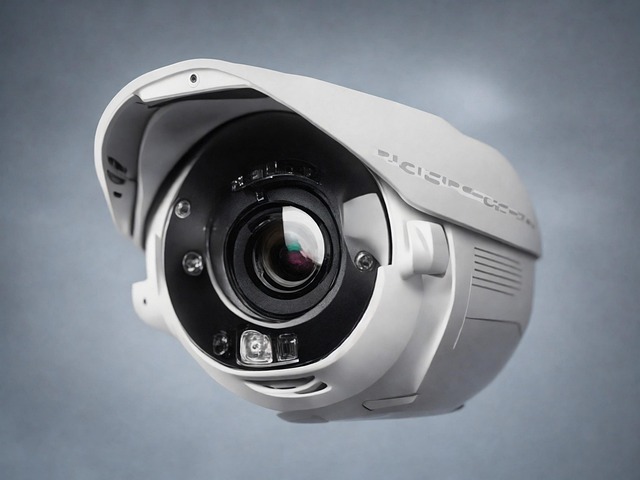In the dynamic media production sector, balancing seamless operations and safety is crucial. This involves coordinating with crews to implement robust security protocols that go beyond physical protection, focusing on personalized strategies for high-profile individuals like celebrities and journalists. Effective communication ensures these measures are integrated into every production stage. Tailored security plans address unique event needs, from gear to surveillance, enhancing safety and productivity. Collaboration among stakeholders, risk assessments, and regular drills create a culture of vigilance, enabling smooth workflows while prioritizing everyone's well-being, especially that of media figures.
In the dynamic realm of media production, ensuring seamless security protocols is paramount. This article delves into the critical coordination between security teams and production crews, highlighting the essential role of personal protection for media figures. We explore effective communication strategies, tailored security protocol design, and best practices for implementation and evaluation. By bridging the gap between security and production, we aim to revolutionize media event safety, ensuring everyone involved remains secure and protected.
Understanding the Role of Security in Media Productions
In the dynamic realm of media production, ensuring seamless operations and the safety of all involved is paramount. Coordination with production crews plays a pivotal role in achieving this, especially regarding security protocols. Security measures extend far beyond just physical protection; they encompass a comprehensive strategy to safeguard not only the production environment but also the well-being of media figures, crew members, and valuable equipment. Understanding the intricate balance between efficient production and robust security is crucial.
Personal protection for media figures, such as celebrities or high-profile journalists, is a specialized aspect within this domain. This involves implementing discreet yet stringent protocols to mitigate risks, from fan interactions to potential threats. A well-coordinated security plan ensures that everyone involved can focus on their tasks without concern, fostering an environment conducive to creative excellence and smooth production flow.
The Importance of Personal Protection for Media Figures
In the dynamic landscape of media production, ensuring the safety and well-being of all involved, particularly media figures, is paramount. Personal protection for media personnel goes beyond basic security measures; it’s a comprehensive strategy to safeguard them from potential risks inherent in their work. From on-set accidents to unexpected threats, having robust personal protection protocols in place can significantly mitigate these dangers.
Media figures often find themselves in diverse and sometimes high-pressure environments, making them susceptible to various hazards. Implementing tailored security measures, such as specialized training, protective gear, and contingency plans, ensures their resilience against unforeseen circumstances. This proactive approach not only enhances the overall production experience but also fosters an atmosphere where creativity can flourish without the shadow of insecurity hanging over it.
Effective Communication: Bridging the Gap with Production Crews
Effective communication is the cornerstone of successful coordination with production crews, ensuring that security protocols are seamlessly integrated into every aspect of the production process. It bridges the gap between security professionals and crew members, fostering a shared understanding of safety objectives and responsibilities. By employing clear, consistent language and straightforward instructions, media security teams can ensure that everyone involved—from high-profile individuals requiring personal protection for media figures to behind-the-scenes crew—is aligned with the established protocols.
Regular meetings, concise briefings, and accessible communication channels are vital tools in achieving this alignment. These practices enable quick clarification of doubts, address unique challenges presented by different production environments, and promote a proactive security culture. Ultimately, open lines of communication enhance situational awareness, allowing for swift adjustments to security measures as needed, thereby facilitating a safer and more productive set environment.
Designing Security Protocols: A Tailored Approach for Media Events
Designing Security protocols for media events requires a tailored approach, focusing on the unique needs of each event and the individuals involved. This includes prioritizing personal protection for media figures, who often become public focal points during such gatherings. A comprehensive strategy should account for high-profile attendees, sensitive content, and potential security risks, both predicted and unforeseen.
By assessing these factors, security teams can develop customized protocols that enhance the safety of journalists, influencers, and other media personnel. This might involve specialized protective gear, discreet yet effective surveillance tactics, and clear communication channels to ensure swift response to any incidents. Such a tailored approach contributes significantly to maintaining a secure environment, facilitating seamless event operations, and allowing participants to focus on delivering high-quality content without security-related interruptions.
Implementing and Evaluating Seamless Security Operations on Set
Implementing and evaluating seamless security operations on set is a multifaceted task that requires close coordination between production crews, security personnel, and key stakeholders. The primary objective is to create an environment where everyone—from actors and crew members to media figures—can work safely and securely without compromising productivity. This involves establishing clear communication channels, assigning specific roles and responsibilities, and regularly conducting risk assessments to identify potential vulnerabilities.
Effective security protocols ensure not just the physical safety of individuals on set but also their personal protection. For media figures, this might include enhanced security measures like dedicated escorts, secure transport, and private accommodations. Regular drills, mock scenarios, and feedback sessions help in evaluating the effectiveness of these protocols, allowing for continuous improvement and adaptation to evolving threats. By fostering a culture of vigilance and collaboration, production crews can maintain a seamless workflow while safeguarding everyone involved.
In conclusion, ensuring seamless security protocols in media productions requires a multifaceted approach. By understanding the critical role of security, prioritizing personal protection for media figures, fostering effective communication, and tailoring security designs to specific events, production crews can create safe and efficient environments. Continuous evaluation and adaptation are essential to meet the unique challenges of each project, ultimately enhancing the overall safety and success of media operations.
